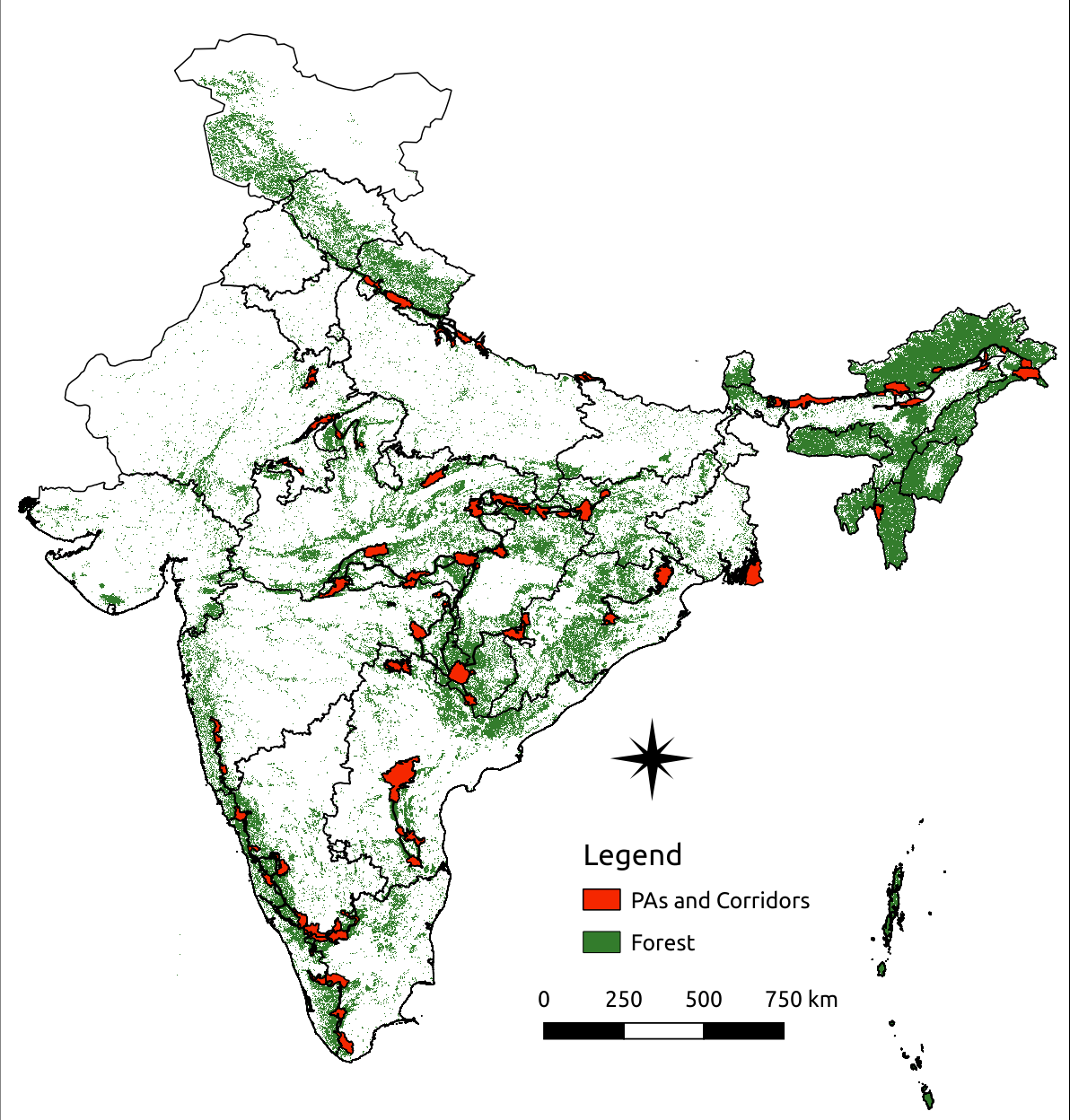Mapping the Corridors
Areas linking one tiger reserve or protected area with another tiger reserve or protected area are not diverted for ecologically unsustainable uses, except in public interest and with approval of the National Board for Wildlife and on advice of the National Tiger Conservation Authority as per Section 38 O (1) (g) of the Wildlife (Protection) Act, 1972.
Further, Section 38 V (3) (b) of the said Act, provides for the tiger conservation plan to ensure ecologically compatible land uses in areas linking one protected areas or tiger reserve with another for addressing the livelihood concerns of local people, so as to provide dispersal habitats and corridor for spill over population of wild animal from the designated core areas of tiger reserves or from tiger breeding habitats with other protected areas.
The National Tiger Conservation Authority along with the Wildlife Institute of India has published a document “Eco-Friendly measures to mitigate impacts of Linear infrastructure on wildlife”, in letter and spirit of section 38 O (1) (g) of the Wildlife (Protection) Act, 1972 to safeguard wildlife and tigers from road accidents in linking / corridor areas.

(Map showing Tiger Reserves, Protected Areas and Tiger Corridors)
The efficacy of these structures is being monitored by the National Tiger Conservation Authority in a project titled “Ecological impact assessment of existing and proposed road infrastructure in important wildlife corridors for strategic planning of smart green infrastructure” through the Wildlife Institute of India. This project has shown that critically endangered wildlife like tigers, dholes and gaur are successfully traversing these structures indicating their usefulness in avoiding road hits involving wild animals.
The National Tiger Conservation Authority alongwith the Wildlife Institute of India, in letter and spirit of section 38 O (1) (g) of the Wildlife (Protection) Act, 1972 have identified 32 major tiger corridors in the country and published them in a document titled “Connecting Tiger Populations for Long-term Conservation”, which are operationalized through prescriptions of a Tiger Conservation Plan mandated under section 38V of the said Act.
The NTCA alongwith the Wildlife Institute of India has conducted sensitization workshops for agencies involved in infrastructure development which inter-alia include Indian Railway Traffic Service Probationers, National Highways Authority of India personnel, Indian Railway Engineers, besides others.
